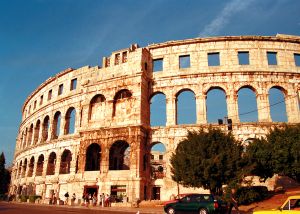
Croatia is a beautiful country situated on the Adriatic coast. It is known as the country of a thousand islands. If you have ever dreamt about being on a small island alone with someone, this is the place for you. If you are a nature lover, Croatia offers camping, mountain hiking/biking, rafting, scuba diving and skydiving.Croatia Destinations Guide
Besides its natural beauty, it also offers: a unique history, a unique mixture of cuisines, many internationally recognised hotels and helpful individuals
Zagreb is the capital of the country. It may not attract as many visitors as the coastal towns of Rijeka or Split or Zadar or Dubrovnik but is well worth a visit.
The Croatian coast is among the most beautiful in the world. Dubrovnik which was the rival of Venice for centuries, great beaches and more than 1001 islands to choose from.

Dubrovnik
Despite a turbulent history during which it has been occupied and conquered by a succession of its neighbors and European colonial powers, Dubrovnik is now a town at peace, allowing visitors to make the most of its rich vegetation, beautiful lakes, white pebble beaches and crystal-clear sea. Political upheaval has seldom kept tourists away from this uniquely lovely Adriatic port city; for centuries it has drawn those seeking fine accommodations, excellent cuisine, beautiful surroundings and recreational opportunities.
There are numerous churches, monasteries and museums to explore and the coastal belt is awash with marinas, piers and promenades.
Zagreb
Zagreb, capital of Croatia, is the country's economic center and gateway to Western Europe. The city is sited on the slopes of Medvednica Mountain along the banks of the Sava River, in the northern part of Croatia. The core of the city consists of the preserved medieval city, known as Gradec and Kaptol, while the residential area covers the southern slopes of the Medvednica Mountains. Since the 1950s the city has grown appreciably to the south of the Sava River, and the main industrial area is in the southeast. Besides being a commercial hub Zagreb is a tourist center, and a popular international conference venue, with a history dating back nearly a thousand years. It is rich in historical monuments, museums and galleries, has modern shops, restaurants, sport and recreation facilities and a good transport infrastructure. Its attractions are largely historical, dating from the Palaeolithic Veternica Cave, through Roman culture and the fascinating medieval old town.
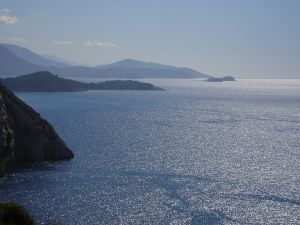
Split
The pretty city of Split has a rich history. Since ancient times it has, in various guises, served as the economic and administrative center of the beautiful Croatian Adriatic coastal region, today called Dalmatia. The city sits mainly on a peninsula on the eastern part of the island of Ciovo, although it has nowadays spread onto the mainland and encompasses the mouth of the River Cetina. From the 5th to the 2nd century BC Greek colonists settled the mainland and adjacent islands. Later, came the Romans: in particular the Emperor Diocletian, who, being of Dalmatian origin, elected to build a huge palace at a spot then called Salona, in AD303. A town grew up around the palace, and eventually, by the Middle Ages, the city of Split had begun to develop. Diocletian's Palace still stands in the very heart of the old part of Split, which charms visitors with its cobbled streets. The greater Split area is characterized by its lush vegetation and green areas, particularly Marjan Hill on the west of the peninsula with its ancient indigenous forest. The city makes an ideal base from which to explore the islands, beauty spots, and historic villages in central Dalmatia.
Dublin destinations guide is divided into north and south with the river Liffey acting as a physical, social and at times psychological dividing line. Traditionally the southside has been regarded as the wealthier end of town, and certainly from a visitor's point of view it does possess the majority of the city's historic sites as well as being the home of the newer, more upmarket centres for shopping and socializing.
The busy traffic intersection, College Green , which is framed by the elegant exteriors of Dublin's premier university Trinity College and the old eighteenth-century parliament building, now housing the Bank of Ireland , was once the central point of the old Viking city.
Stretching south of here is the pedestrianized Grafton Street, the city's commercial and social hub, leading to the stylish Georgian streets that surround St. Stephen's Green.
Heading directly west of Trinity College, however, will bring you to the narrow, cobbled lanes of the Temple Bar area, the centre for the city's nightlife, overlooked by the imposing facade of Dublin Castle , the seat of British rule until 1921. Further west still are Dublin's most important cathedrals, Christchurch and St Patrick's , it's near here that the rich smell of malting grain from the nearby Guinness brewery begins to fill the air.
On the northside of the river from the brewery is the historic Smithfield area, scene of the famous horse sales and home to the Jameson Whiskey distillery, east of which is the city's main thoroughfare, O'Connell Street from which the rebellion was launched that resulted in Irish independence.
Entertainment
Pubs are an integral part of Dublin's social life and an essential part of any visit. The charm of most of Dublin's older pubs derives from the fact that they're simple, no-nonsense places, the better ones unchanged for decades, where you can get a good pint of Guinness and the people are friendly.
There are over 800 pubs and bars in the city, where you're likely to find music and other entertainment.
Clubs are by nature volatile. There are two distinct club scenes in Dublin. The first is an eclectic collection - including the new, much talked-about chic clubs - scattered around the city centre. Most are hard to get into - that's part of their cachet - and expensive at the weekends. The second, is based in and around Leeson Street, southeast of St Stephen's Green. The clubs here do, however, serve a purpose: a string of basement places that are busy after everything else has shut, these are the clubs to hit at two or three in the morning if you're really desperate to go on partying. Most have no entry fee but serve very expensive drinks - they're at their best Thursday to Sunday from around 1am till dawn.
Dublin has a large number of cinemas - almost all of them on and around O'Connell Street - showing mainstream films. All Dublin's cinemas operate an enlightened policy of cheap seats before 5pm seven days a week. The peculiarities of the film distribution system mean that new movies are often released earlier in Ireland than in Britain.
Dublin may not be the gastronomic capital of the world, but there's plenty of choice - nearly all of it south of the Liffey - for both lunchtime and evening eating. Café society has reached Dublin in a big way in recent years, providing a new range of chic and trendy locations - in and around Grafton Street and Temple Bar - for all-day eating and drinking, and on Sundays many more places open up for sustaining brunches. At lunchtime, Dublin's many pubs usually offer the best value: you can usually get soup and sandwiches and often much more substantial, traditional meals. The cheapest fast-food outlets - everything from Pizzaland and Wimpy to cheap Chinese and the ubiquitous kebab houses - are centred around O'Connell Street.
In the evening there's no shortage of restaurants. The spectrum of cuisines on offer is impressively wide, ranging from Egyptian, Lebanese, Russian and Cajun to the more familiar French, Italian and Chinese. Several restaurants offer traditional Irish fare, and there's also a number of good seafood places and plenty of vegetarian options. The cheaper, livelier restaurants are concentrated around the Temple Bar area, between Dame Street and the Liffey, while more expensive establishments are scattered throughout the city, with a concentration around St Stephen's Green.
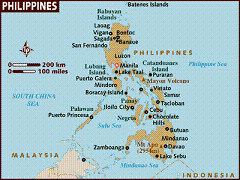
The Philippines holiday guidehas really taken off as a tourist destination in the last few years. Not only is it easy to get around with a small navy of ferries, shuttle boats and water taxis but English is widely spoken and there are an astonishing amount of different things to do.
Whatever you want, from relaxing on the beach to a quiet mountain retreat, the Philippines has it all. Divided into three main island groups: Visayas, Mindanao and, home to Manilla, the capital, Luzon. All have their own attractions.
The best place for just relaxing on the beach is, arguably, Boracay Island, near Luzon island. With long white beaches and clear waters it is ideal for snorkelling, scuba diving and relaxing. In the south-east, in the Visayas islands, lies Cebu, which is internationally known for its suitability for watersports.
If a busy and cosmopolitan city is more up your street for some of your holiday then you cant go far wrong with Manilla. Taking its name from the Nilad, a white-flowered mangrove plant, it has a long and turbulent past by any standards. Manilla has risen above all its past troubles and is now a thouroughly modern city where the past is still preserved and visible.
Places to see
Manila
Set on Manila Bay, the capital of the Philippines is divided into different districts, each with something to offer. They are linked by the fantastically painted, but less fantastically maintained ‘Jeepney’ pick-up trucks that ferry the locals from place to place. Many people stay for just a day or so before moving on, but there is plenty to explore in the city.
Remnants of the colonial Spanish era are found right in the heart of Manila in the ‘Walled City’, Intramuros, which is one of the best-preserved colonial city centres. Dungeons and old churches share space with art galleries, theatres, and a nature park. Nearby Rizal Park is a great place to visit first thing in the morning to see the locals doing their Tai Chi or practising the traditional martial art of arnis de mano.
Manila is also home to Malacanang Palace, the official residence of the highest chief executive of the country and one of the most historic structures in the Philippines. Along the northern bank of the historic Pasig River is Chinatown, a symbol of the long history of Chinese presence. Makati is the business district of the city, but it is also home to some of the grandest five-star hotels and largest shopping centres. Malate and Ermita districts are also popular for their variety of restaurants, clubs, bars, cafes, art and antique shops.
Cebu
Even before the Spanish colonialists arrived here in the 16th century, trade with the Chinese flourished in this province and many Chinese and Spanish landmarks remain. The magnificent Basilica Minore del Santo Nino was built in 1575 and stands close to Magellan’s Cross, which apparently contains splinters from a cross he planted on the shores of Cebu on his first visit in 1521. The Taoist temple, located in a residential area known as Beverly Hills, is a symbol of the city’s large and influential ethnic Chinese population. Across a road bridge from the airport is Mactan Island, a 15 square kilometre island made entirely of coral reef. Once a quiet fishing community, it is now home to some of the best beach resorts in the Philippines.
Shangri-La Mactan Island Resort and Spa, Cebu
Shangri-La’s Mactan Island Resort is Cebu’s most exclusive deluxe resort and provides its guests with the ultimate tropical paradise experience. An idyllic resort with a beautiful private beach, it offers an exciting range of recreation activities and superb cuisine. Every guestroom blends tropical decor with modern amenities, and private balconies provide panoramic views of the Visayan Sea.
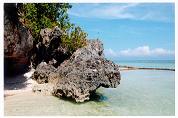
Welcome to Bohol, God's Little Paradise, as it is sometimes called by the Boholanos themselves. This is not fully unjustified, as the island is one of the most diverse and attractive destinations in the Philippines. Within its area of about 4200 square kilometers, it houses countless white sandy beaches, numerous historic churches and watchtowers, enchanting waterfalls and caves, and, unique in the world, its amazing and stunning Chocolate Hills.
Scenic Bohol casts an enigmatic charm drawn from the many archaic mementos spread throughout the oval-shaped island - from unique rock formations to a 45-million-year-old mammal species, from massive stone watchtowers built by the Spaniards in the 18th century. Surrounding the mainland are 73 other smaller offshore islands and islets whose palm-fringed coastlines are rimmed by white sand and sheltering coves. Serpentine coastal highways wind along unsullied beaches and rustic rivers where the tourist can stop at any point and jump in for a dip.
Bohol is famous for whale watching, river cruising, smallest primate-Tarsier, Sandugo Festival, beaches, scuba diving, mountain climbing, caving, cambuhat oyster farm (ecotourism activity), Bird watching
Town visits promise exciting cultural treats that include scheduled performances by the Teatro Bolanon, Dimiao Rondalla, Diwanag Dance Theater and the award-winning Loboc Children's Choir.
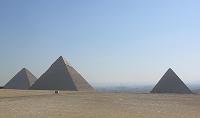
The Nile meanders silently through Egypt past some of the most ancient and beautiful monuments in the world. Much of the scenery you'll see in this wonderful African country has remained unchanged for literally thousands of years - there's a long and breathtaking history here, and the fascinating combination of age-old culture and superb resorts make Egypt an ideal holiday destination!
Choose from the following resorts in Egypt holiday guide
Sharm El Sheik
Nestled between the national park of Ras Mohammed and the calm shores of the Red Sea, Sharm el-Sheikh is the jewel of the Sinai Peninsula.
For many visitors, the most stunning scenery of this region is underwater in the colourful reefs encircling the peninsula. As one of the world's most extraordinary diving destinations, you can snorkel or dive in an underwater playground of coral gardens, shipwrecks and azure blue waters.
Hurghada
Hurghada is virtually a purpose-built resort developed around a water sports industry that you'd find difficult to beat anywhere else in the world. This part of the Red Sea coast is rich in stunningly beautiful underwater flora and fauna, and the warm water is home to a myriad of tropical fish and coral reefs that live out of the view of anyone without access to either scuba gear or a glass-bottomed boat.
Thankfully, both these activities are both available in abundance, as are many other aquatic pursuits over, and below sea level. If there's much to do during the day, then there's even more to do during the night. Hurghada comes alive with bustling bars, restaurants and clubs, and attracts a younger clientele, although revellers of all ages certainly won't feel out of place.
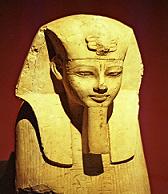
Luxor
You'll soon realise why Luxor has been called the world's grearest open air museum - the sheer number and quality of the monuments in the area is simply unparalleled. A paradise for culture lovers, this is the ideal base from which to visit the awe-inspiring monuments which line both sides of the Nile:
The stunning Valley Of The Kings and the tomb of Tutankhamun, the magnificent Luxor temple, and Karnak - the largest place of worship ever constructed, and built over a period of 1,500 years. Luxor's museum is also one of the best in Egypt and contains a wonderful display of antiquities. But there's more to Luxor than an impressive ancient history; wandering around the city today you'll find colourful cafes and restaurants, and bazaars where you can buy locally crafted alabaster goods and clay pottery. You can ride in a horse-drawn caleche, sail in a felucca, take a sunset cruise, or see the city from a hot-air balloon.
Etiketler:
crazy holiday,
england travel,
go on a holiday,
holiday cars,
holiday friends,
holiday plans,
holiday time,
holiday villages,
plus travel,
russian holiday,
sea travel,
summer holiday,
usa holiday,
work and holiday
When Bodrum still bore the name "Halicarnassus", the capital of Caria, the city and its peninsula produced a considerable number of prominent personalities whose names continue to be celebrated in history. In later ages others gained admission to this Roll of the Renowned - which is not closed yet.
Hailed as "Father of History"; traveled extensively and wrote "Histories". Born ca. 484 B.C.
Navigator and explorer; sailed from the Indus River to the north reaches of the Red Sea. (ca. 510 B.C.)
Queen of Caria, member of the war council of Xerxes of Persia; commanded her own naval squadron in the Battle of Salamis (480 B.C.)
Ruler of Caria; enlarged Halicarnassus, brought in population and surrounded the city with extensive walls.
Sister and wife of Mausolus; built the Mausoleum; conquered Rhodes by stratagem.
|  |
Queen of Caria; deposed by her brother, reinstated by Alexander the Great who became later adopted son.
Historian, linguist and critic; wrote a 20 volume history of Rome and other works.
Poet, satirist and bete noir of the establishment; reed flute virtuoso.
Known as Dragut to western historians; corsair, then admiral in Ottoman navy, killed in the siege of Malta (1565).
|







